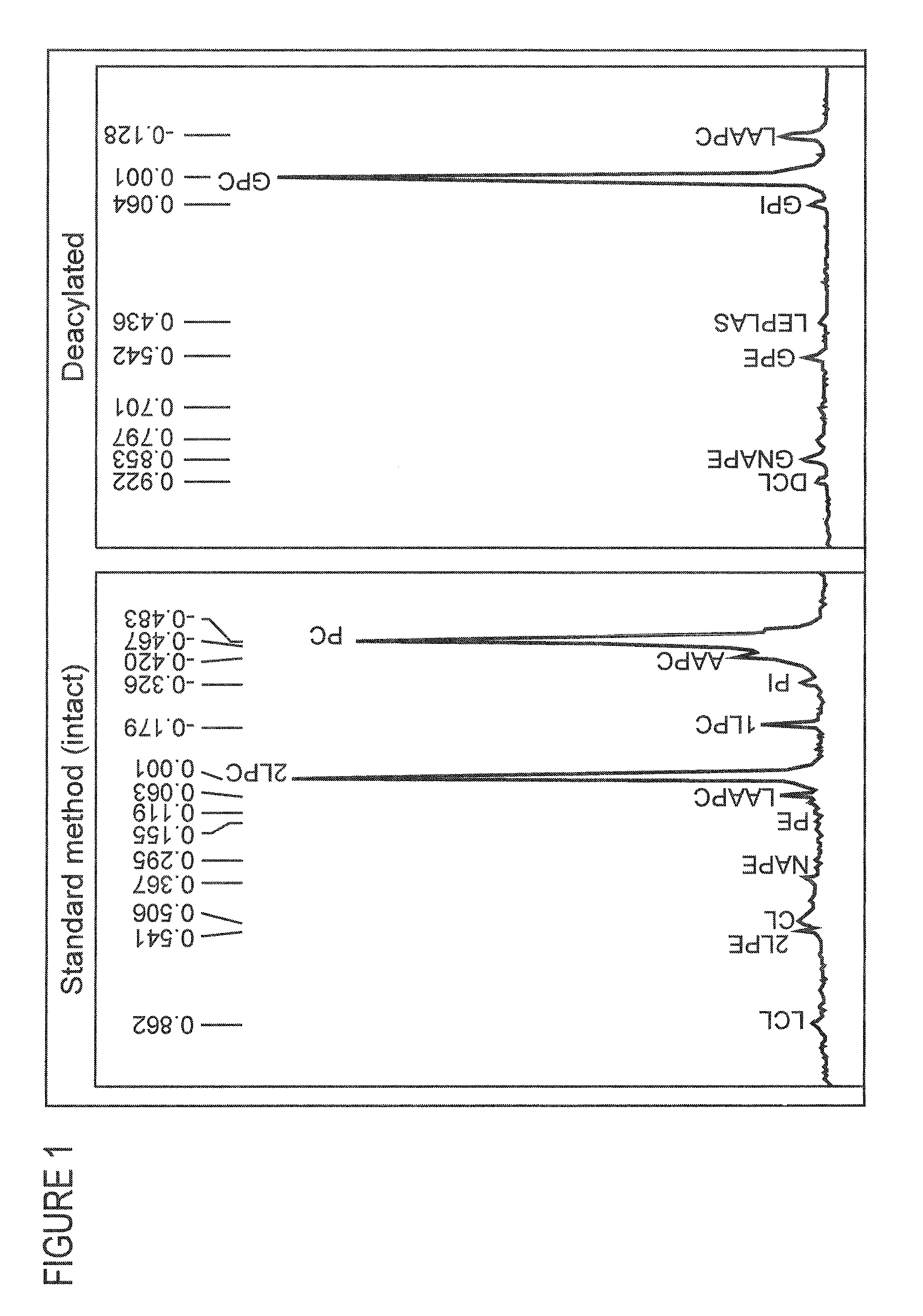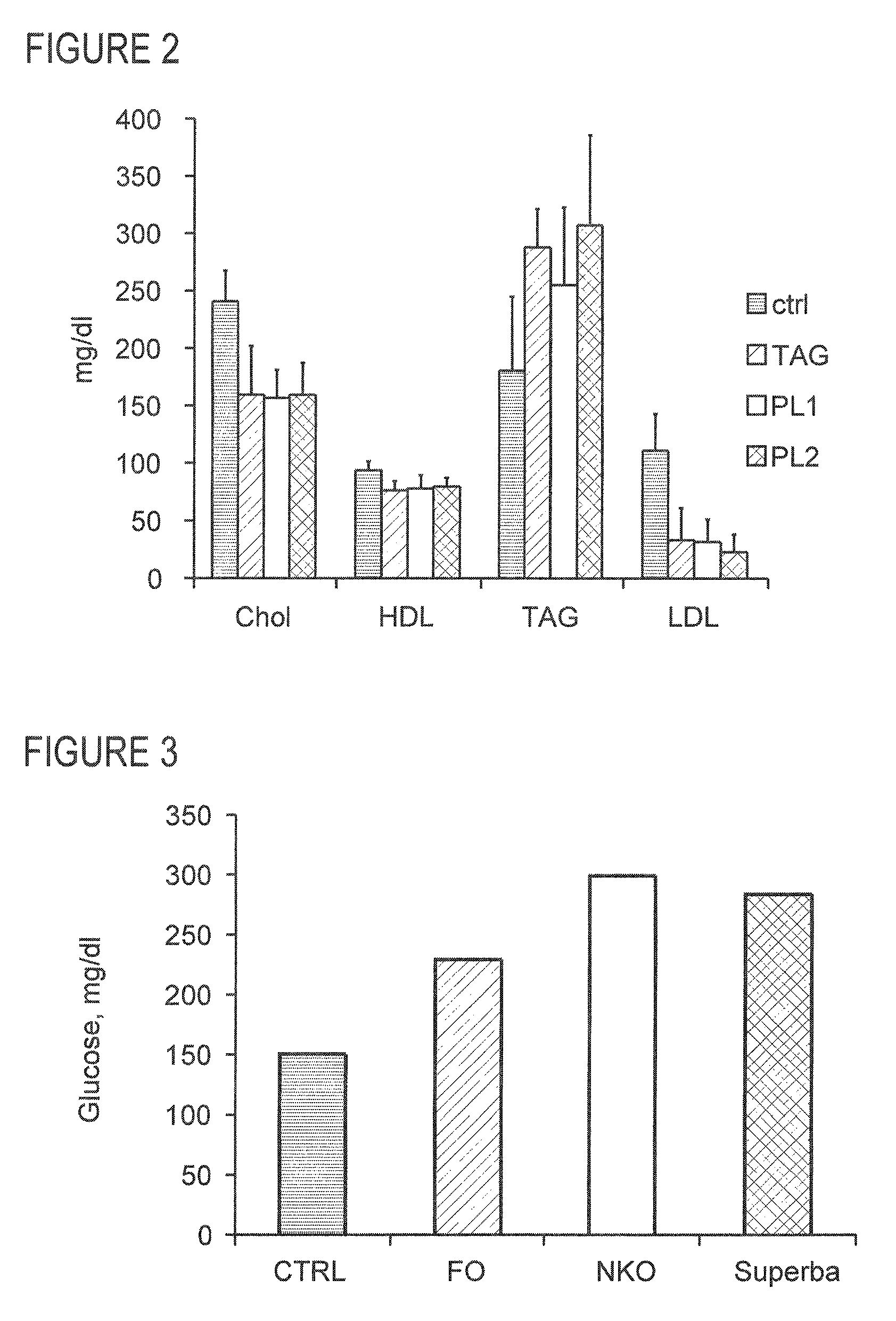Methods of using krill oil to treat risk factors for cardiovascular, metabolic, and inflammatory disorders
a technology of metabolic, cardiovascular, and inflammatory disorders, applied in animal feeding stuff, animal husbandry, pharmaceutical non-active ingredients, etc., can solve the problems of increasing the weight of krill, increasing the difficulty of mechanical separation of increasing the difficulty of separating water, fat and protein using mechanical separation methods, etc. problems, to achieve the effect of reducing the risk of cardiovascular disease, and improving the quality of li
- Summary
- Abstract
- Description
- Claims
- Application Information
AI Technical Summary
Benefits of technology
Problems solved by technology
Method used
Image
Examples
example 1
[0118]Antarctic krill (Euphausia superba) was captured and brought on board alive, before it was processed into krill meal, an oil (asta oil), and stickwater. During the krill meal processing a neutral oil (asta oil) is recovered.
example 2
[0119]The krill meal obtained in Example 1 was then ethanol extracted according to the method disclosed in JP 02-215351, the contents of which are incorporated herein by reference. The results showed that around 22% fat from the meal could be extracted. Table 1 shows the fatty acid composition of the krill meal and the krill oil extracted from the meal using ethanol. Table 2 shows the composition and properties of the krill meal and products before and after extraction, whereas Table 3 shows the lipid composition.
[0120]
TABLE 1Fatty acid distribution in krill meal (g / 100 g lipid)and the ethanol extracted krill oil.Fatty Acid FileKrill meal EtOH KOC4:00.00C6:00.00C8:00.00C10:00.00C12:00.00C14:07.86.4C14:10.00C15:00.00C16:015.814.7C16:15.14.2C18:00.90.7C18:113.411.8C18:2N61.11.2C18:3N60.10.1C18:3N30.40.4C18:4N31.10.1C20:00.10.1C20:10.80.6C20:2N6C20:3N60.1C20:4N60.20.2C20:3N3C20:4N30.20.2C20:5N3 (EPA)10.510.4C22:0C22:10.50.4C22:2N6C22:4N6C22:5N60.00C22:5N30.2C22:6N3 (DHA)5.44.8C24:10.03...
example 3
[0123]The krill meal obtained in Example 1 was then subjected to a supercritical fluid extraction method in two stages. During stage 1, 12.1% fat (neutral krill oil) was removed using neat CO2 only at 300 bars, 60° C. and for 30 minutes. In stage 2, the pressure was increased to 400 bar and 20% ethanol was added (v / v) for 90 minutes. This resulted in further extraction of 9% polar fat which hereafter is called polar krill oil. The total fatty acid composition of the polar krill oil, the neutral krill oil and a commercial product obtained from Neptune Biotech (Laval, Quebec, Canada) are listed in Table 4. In addition the fatty acid composition for the phospholipids (Table 5), the neutral lipids (Table 6), the free fatty acids, diglycerides (Table 7), triglycerides, lyso-phosphatidylcholine (LPC) (Table 8), phosphatidylcholine (PC), phosphatidylethanolamine (PE) (Table 9), phosphatidylinositol (PI) and phosphatidylserine (PS) (Table 10) are shown. Table 11 shows the level of astaxanth...
PUM
| Property | Measurement | Unit |
|---|---|---|
| mass | aaaaa | aaaaa |
| mass | aaaaa | aaaaa |
| w/w | aaaaa | aaaaa |
Abstract
Description
Claims
Application Information
 Login to View More
Login to View More - R&D
- Intellectual Property
- Life Sciences
- Materials
- Tech Scout
- Unparalleled Data Quality
- Higher Quality Content
- 60% Fewer Hallucinations
Browse by: Latest US Patents, China's latest patents, Technical Efficacy Thesaurus, Application Domain, Technology Topic, Popular Technical Reports.
© 2025 PatSnap. All rights reserved.Legal|Privacy policy|Modern Slavery Act Transparency Statement|Sitemap|About US| Contact US: help@patsnap.com



